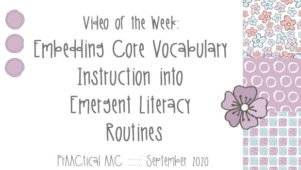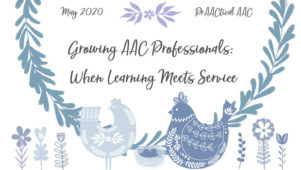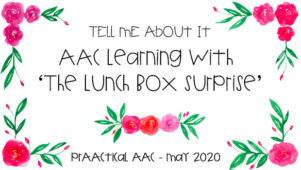AAC & Literacy- Setting the Stage
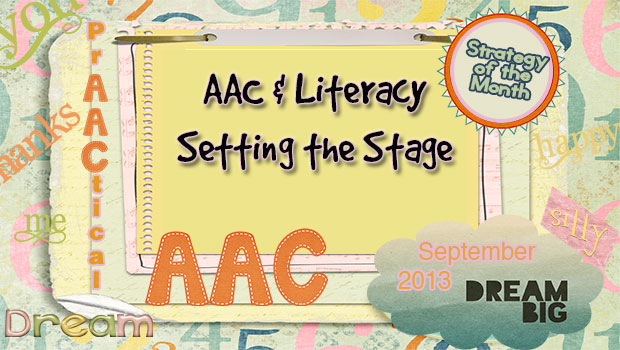
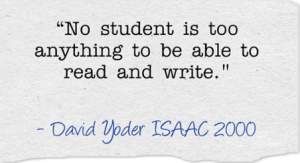 Literacy is for all students. As with most things we learn, emergent readers and writers need to be active participants with print across multiple settings and in multiple meaningful experiences. Emergent readers need to be taught to integrate reading and writing with communication and language. To facilitate this comprehensive integration and understanding, SLP’s and educators can use a variety of authentic research based strategies to help.
Literacy is for all students. As with most things we learn, emergent readers and writers need to be active participants with print across multiple settings and in multiple meaningful experiences. Emergent readers need to be taught to integrate reading and writing with communication and language. To facilitate this comprehensive integration and understanding, SLP’s and educators can use a variety of authentic research based strategies to help.
- Create a literacy enriched environment- Literacy skills are promoted through an environment with lots of reading and writing materials. Text based labels and signs will help bring meaning to text in authentic experiences. As you plan activities, include options for writing time/centers, and reading time/centers. Have books accessible to learners. Have lots of book options, but also help students independently turn pages (make it easy with page fluffers), reach books, use writing materials, etc. During interactive activities, give learners a choice of 2 or more books to read together. For free time, offer lots of book choices. Give notes to convey messages (e.g., thank you notes, invitations, notifications, ‘to do’ lists, etc.). During art projects, have students explain their projects (this can be independently, through the written choice strategy, through AT, etc.).
- Use Assistive Technology- Use a variety of assistive technologies to support sustained interaction, communication, writing, and reading. Use single and sequential hit message devices to ‘read’ repeated story book lines, or ask you to “tell more”, or “what happened next”. All students should have access to core word communication displays in order to communicate comments and requests during reading and writing activities.
- Create Successful Literacy Interactions- Focus on the engagement and fun of reading and writing. Use assistive technology to extend interactions by communicating and reading with you. Be silly or overly serious if appropriate, laugh or cry together.
- Provide many, many opportunities to interact with print for reading, writing, & communication- This is definitely part of a literacy rich environment, but now check and make sure the learner is an active participant in the literacy rich environment. Offer opportunities to make choices, explain, predict, and especially relate known information to new information from read and written material. Use gestures, facial expression, objects, people to show how things are the same and different. We had one young man who was a very reluctant reader but over time enjoyed listening to books read by his mother. The books he chose were often above his own reading level (and what we thought was his language level). However, after about a month of listening, he started pointing to mom anytime the book mentioned love and a mother or he would point to his head when they were reading the book Fever.
- Provide a Purpose of Reading- In direct and indirect literacy instruction, state a reading purpose. Tell why you are reading, what you will look for, and what activity you will do after reading. You can develop a reading routine incorporating the reading purpose (the beginning), reading the book (the middle), and completing the reading activity (almost the end). Reading feedback will be the end (see below). Once a routine is established, ALL learners will often look for and even initiate the routines.
- Provide Reading Feedback- Discuss how the reading activity was correct or what modifications will make it correct. Reading feedback is reinforcing and should be positive but is specific to how and why the activity was successful. This type of feedback is more about the process than the product and gives the learner ‘inner speech‘ on how to do it next time correctly.
A few Resources
Symbol Supported Text- Does It Really Help?
Infusing Literacy Opportunities In AAC Therapies
Resources
New York City Department of Education: Adapted Books
Baltimore City Schools- Book Specific Communication Boards
Filed under: Strategy of the Month
Tagged With: beginning communicator, emergent literacy, literacy
This post was written by Robin Parker


